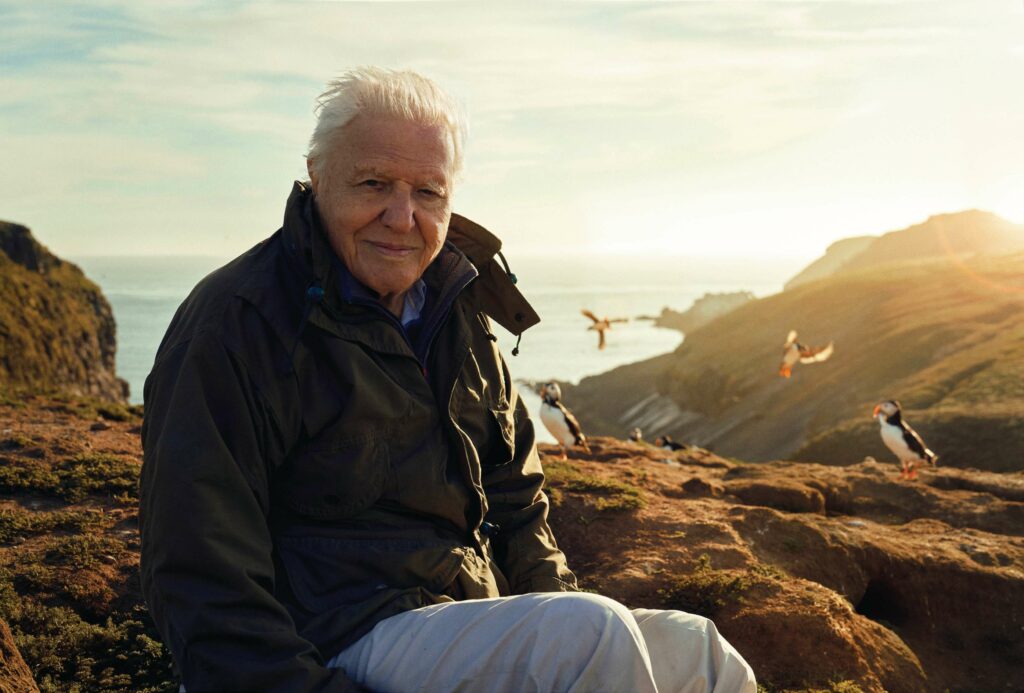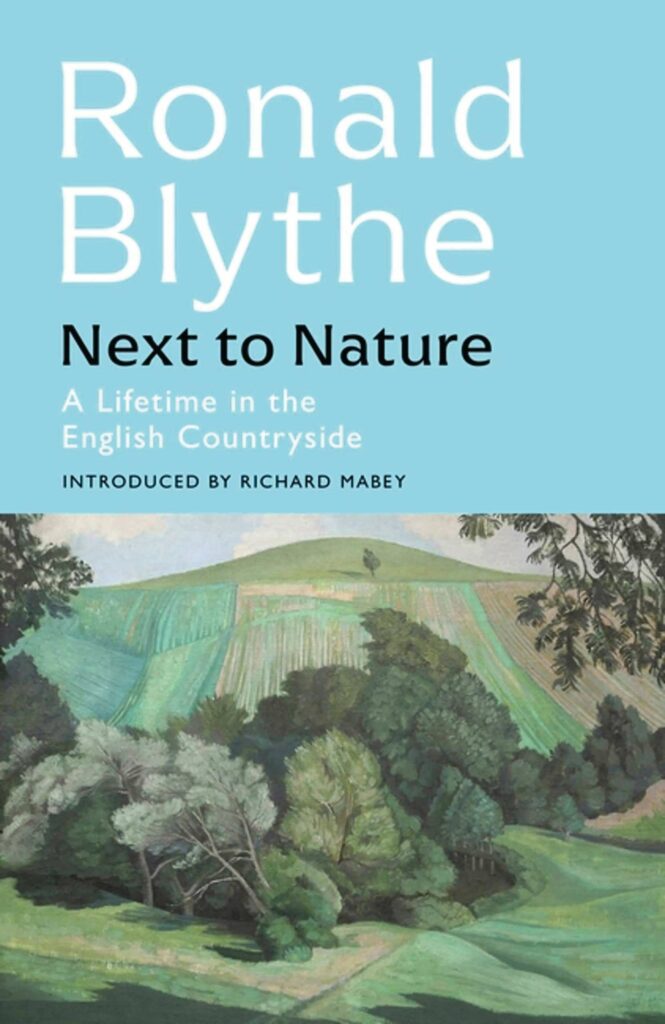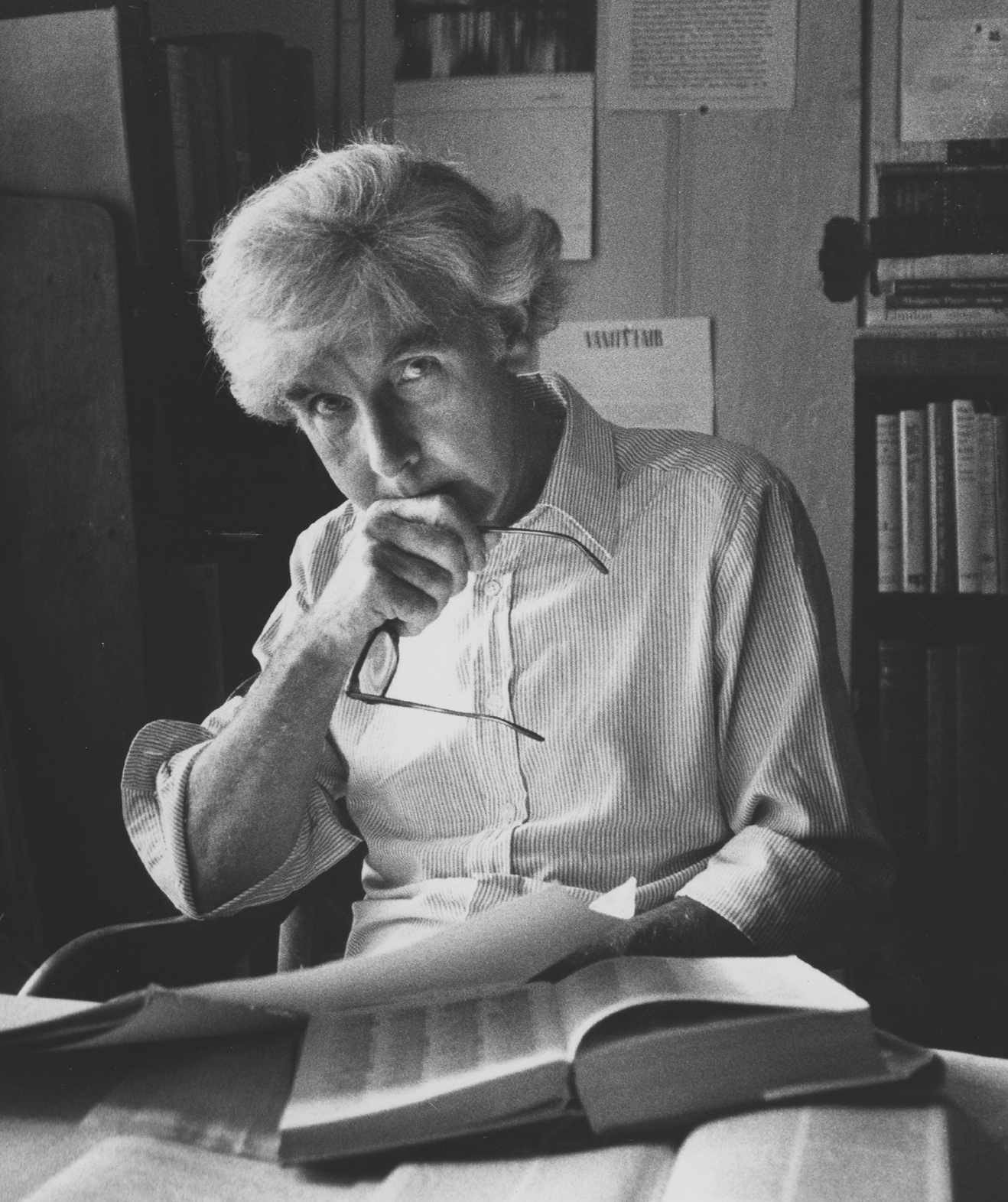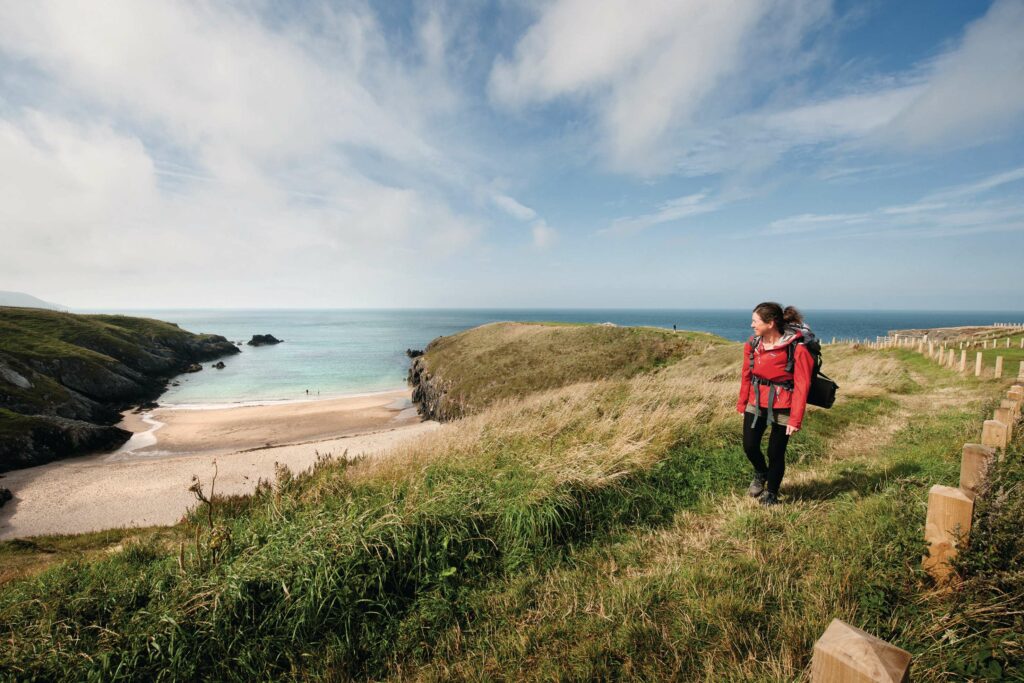March
Lazy days
BOOKS › TV › RADIO › FILM › LETTERS › PUZZLES
BRITAIN’S WILD TREASURES REVEALED
David Attenborough’s new BBC series shines a light on Britain’s wildlife spectacles
WILD ISLES
BBC ONE AND IPLAYER

The news that Sir David Attenborough, at the grand age of 96, will be presenting a bold new BBC documentary series this spring focused on the wild jewels of Britain, has left us giddy with excitement. From magnificent white-tailed eagles swooping over windswept seas, to butterflies in battle, Wild Isles promises a feast for the senses.
This ambitious five-episode documentary series, filmed in Britain over the past three years, focuses on the wealth of wildlife and habitat to be found on our isles. The programme uses cutting-edge filming techniques to capture extraordinary footage of nature in the raw, from ancient oak woodlands and rare hay meadows to seabird breeding colonies and precious chalk streams. After an introductory episode about British wildlife, the next episodes focus on four key habitats: woodland, grassland, marine and freshwater.
While Britain and Ireland have some of the most diverse and beautiful landscapes on Earth, our wildlife is increasingly fragmented and fragile; this series explains the challenges nature faces, and what can be done to make these isles even wilder in the future.
Sir David says: “In my long lifetime, I have travelled to almost every corner of our planet. I can assure you that in the British Isles, as well as astonishing scenery there are extraordinary animal dramas and wildlife spectacles to match anything I have seen on my global travels.”
Look out for the beautifully illustrated accompanying book, Wild Isles by Patrick Barkham and Alastair Fothergill (William Collins, £25), available this month.
NEXT MONTH: Our Wild Isles feature
BOOK
THE QUIET MOON

This is a beguiling piece of writing with a rare warts-and-all-honesty about mental health, nature and life. Built around a central focus of a year through the lens of the ancient Celtic calendar and its poetically named moons, Kevin Parr explores his life-long struggles with depression in an open, brave manner. The lunar cycle has long been thought to impact on mental health – think ‘lunacy’ – so it’s an engaging premise blending a bit of detective work about the little-known Celts with Parr’s own darknesses.
Very few of us are without anxiety or fear and Parr’s acute descriptions of how he tackles his demons (or not) offer profound human comfort. It’s all wrapped in amiable musings about history, culture, politics, conservation and so much more.
But it’s Parr’s vivid observation and symbiosis with his local nature in Dorset – particularly his reptiles – that bring the extra magic. He’s a true naturalist, exploring theories, watching for hours on end and completely immersing himself in the rhythms of day, month and season. Bad weather should be embraced for its moods and sensory experiences. He finds beauty, wonder and sadness. But most of all, a form of solace and connection with “an ancient way of being”, which involves acceptance rather than regret or guilt.

BOOK
NEXT TO NATURE

If the 20th century was the age of the car, it’s remarkable that the Akenfield author Ronald Blythe, who died in January this year, managed to navigate his own 100 years without learning to drive. Even more remarkable, given that his home was at the end of a rutted track near Wormingford on the Suffolk-Essex border where Blythe lived, car-free and computerless, for 45 years.
This rooted, analogue existence, where Ipswich is “as unreachable as Rome”, granted Blythe half a lifetime to meditate on the countryside encircling Bottengoms, the Tudor farmhouse bequeathed him by the painter John Nash. Next to Nature, published in Blythe’s centenary year, is an anthology of these meditations. Drawn from the weekly column he wrote for the Church Times, the essays weave Blythe’s observations of the natural world with the observances of the religious calendar – farming and feast days being closely aligned.
Though parochial in theme, the book’s range is global. Great writers, artists and thinkers feature alongside the flora and fauna (human and bestial) on the author’s East Anglian doorstep. Blythe’s typewriter turns from haymaking to Hale-Bopp, nightingales to the Napoleonic Wars, scything to Solzhenitsyn, bees to Beowulf, with the same forensic attention.
We don’t learn much about the emotional life of one of our greatest authors, but nor do we need to. Instead we have a precious extended love letter – adecades-long relationship between a man and his secluded loop of the Stour Valley.

BOOK
SPRING RAIN

As life affirming as its title, Spring Rain is the third in Marc Hamer’s trilogy of books exploring the threads that weave between land, love and memory. Writer, gardener and sometime mole catcher, as recounted in A Life in Nature, or How to Catch a Mole, Marc Hamer has had a peripatetic life, from the north of England to Wales, from railway worker to artist, gardener to life writer. This is not a book about gardening or landscape, or even a biography, but about the relationships we all build with the world around us, and the childhood we carry within.
In alternating explorations of past and present, Spring Rain recalls Hamer’s unsettled childhood and embeds it within his present contentment, finding fulfilment and freedom through the natural world. Animals and plants recur as events and observations: “Tiny sounds, tiny smells, tiny sensations”, the heightened awareness of being alone in nature, the muddy puddle a young boy sails across, wolfsbane and foxglove that deal in death, a wren flitting through shadows.
Age, or more specifically ageing, creep into the story as the book nears its end, but creation is a continuous thread. “Life,” Hamer observes, “is infinitely creative – gardening is the same as painting, as writing, as dancing. The garden I made is this book, this book I write is a garden.” And it is a garden we should all visit.

BOOK
THE EDGE OF CYMRU

The Edge of Cymru is a delightful part-travelogue and part-exploration of Welsh culture and history.
The travelogue elements burst with beautiful, descriptive prose, which h picks up the minutia of each moment in a way reminiscent of Paul Theroux (albeit with less dry wit but infinitely more warmth). At times I could see myself right beside her, sheltering from coastal winds or walking through depressed Y Rhyl, wondering how it fell so hard from grace.
After the initial year of walking, Julie took 10 years to research the book and this is apparent on every page. The book charts Welsh history backwards, from Devolution, through industrialisation, back into Norman, Saxon and Roman times and beyond, with everything in between. This helps the reader understand how Wales, throughout its history, has walked a tightrope. At times it stood as a fierce, proud independent nation and at others it suffered oppression from its more powerful neighbour.
These non-fiction elements entwine seamlessly with the personal prose, without ever feeling clunky or tagged on. The depth of research reminded me of the books of Jerad Diamond and Yuval Harari. Brominicks skilfully examines broad social, environmental, political, economic and even geological changes without the book feeling dry.
Considering the breadth and depth of the subject matter, this remains easy to read at all times. It is as accessible as a novel and would make a great holiday read as much as a bedside book.
TV
ROBSON GREEN’S WEEKEND ESCAPES
BBC TWO AND IPLAYER

Actor Robson Green showcases the stunning landscapes of his home turf – England’s north-east – in this delightful new 15-episode BBC series. Robson’s family and friends join him on a series of two-day escapes designed to ease stress and boost wellbeing, from cold-water swimming to cycling coastal paths, riding zip wires through the forest and journeying on a steam train.
Robson takes on a Go Ape course with his uncle and brother, attempts to share a paddleboard with footballer Les Ferdinand and visits Helmsley Walled Garden with Lioness Jill Scott. Life-affirming and inspiring viewing.